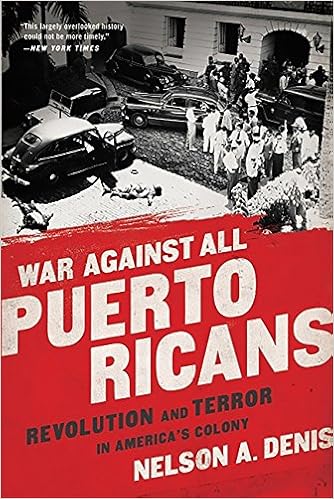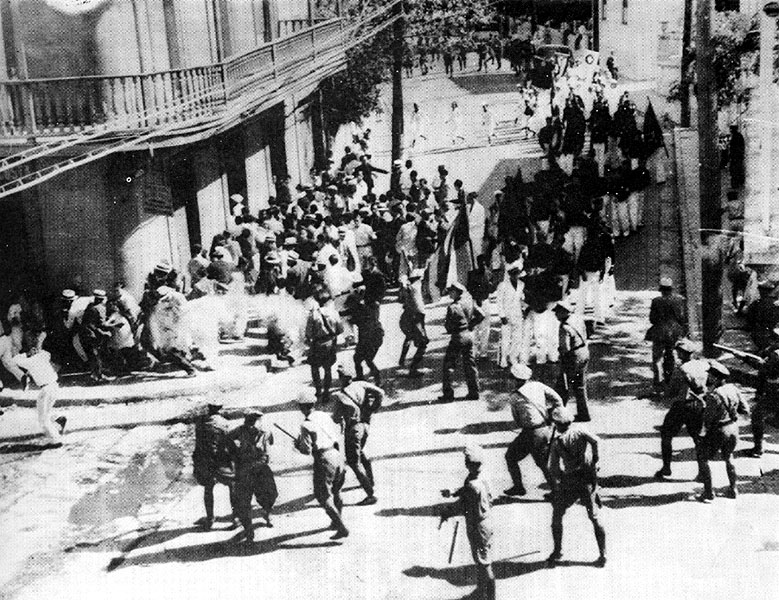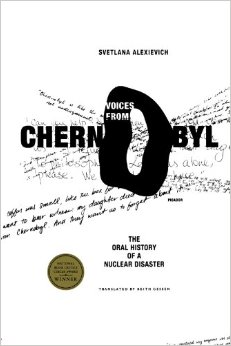Book Review: Abolitionist Socialist Feminism: Radicalizing the Next Revolution

Book Review: Abolitionist Socialist Feminism: Radicalizing the Next Revolution
H. Bradford
6/27/19
An edited version of this post appears in Socialist Action news:
https://socialistaction.org/2019/06/21/books-abolitionist-socialist-feminism/
Zillah Eisenstein, “Abolitionist Socialist Feminism: Radicalizing the Next Revolution” (New York, Monthly Review Press: 2019), pp. 160
An astonishing three to five million people participated in the 2017 Women’s March in the United States and this year, 600,000-700,000 people are believed to have participated. Yet, the Women’s March and in the feminist movement in general has been critiqued for ignoring racism and how the experiences of women of color differ from those of white women. Although women of color were leaders in organizing the Women’s March, the march has been criticized for failing to address racism in signs, leaders, and demands. Another critique, such as from Alicia Brown a co-founder of Black Lives Matter, was that those who attended the march had neither spoke against nor shown up to protest the racist nature of mass incarceration, unemployment, police violence, and homelessness. The feminist movement today is often criticized as “white feminism” or a movement which fights for middle or upper class white women, only giving lip service to racial issues when it furthers their own goals or image. A similar critique is sometimes launched at socialists, who are at times accused of sidelining race and gender issues in the interest of class struggle. The substance and meaning of Bernie Sander’s version of socialism is debatable, but he has been accused of color blindness and avoiding of racial issues. For those who associate Sander’s with socialism, it sends the message that race is not important to socialists. Abolitionist Socialist Feminism: Radicalizing the Next Revolution by Zillah Eistenstein seeks to remedy of the problem of “white feminism” and color blind socialism by connecting anti-racism, feminism, and socialism.
One important way that the book addresses racism is by centering itself around the voices of people of color. Although author Zillah Eisenstein is white, she highlights the insights of a large number of antiracist thinkers and activists such as Kimberly Crenshaw, Angela Davis, bell hooks, Ta-Nehisi Coates, and Frantz Fanon. Centering the voices and experiences of people of color is important to anti-racist movement building and Eisenstein models this throughout the text. The book itself ceners upon examining multiple oppressions in ways that are inspired from Kimberly Crenshaw’s intersectionality as well as the Black feminist thinking that preceeding it, such as the work of the Combahee River Collective. The Combahee River Collective argued that “sexism, racism, heterosexism, and capitalism are interlocking systems of oppression that necessitate revolutionary action (p. 57).” Thus, as the name suggests, Abolitionist Socialist Feminism: Radicalizing the Next Revolution (2019), takes a multifaceted approach to feminism and socialism and is a tool for building a movement which fights against racism, while fighting for workers, women, and other oppressed groups. The book begins by posing a series of questions meant to provoke deeper thinking about the interconnectedness of racial, class, and gender oppression. These questions are explored throughout the book, though the big idea is that socialism and feminism must be anti-racist, anti-racism needs socialism and feminism, feminism must be socalist, and socialism must be feminist.
While the book offers many insights, there are a few which are particularly important. Again addressing the issue of white feminism, the book vigorously pursues the important point that white women have been complicit in maintaining white supremacy. A largely white female jury determined that George Zimmerman was not guilty of murdering Trayvon Martin. White women historically supported the lynching and castration of Black males. They also obtained social standing by controlling slaves. Eistenstein also argues that white women helped to get Trump elected, as 53% if white women voted for Trump (with the caveat that half of eligible voters did not vote at all.) She posits that white women voted for racism and sexism when voting for Trump, who represents misogynoir, a term coined by Paula Moya. Misogynoir is a term to add to the vocabulary of multiple oppressions and is used several times in the book to describe the intersection of sexism and racism.
Another important point made in the book is that the working class is not white and male, nor has the global working class ever been predominantly white and male. The struggles of workers of color are spotlighted in the book, such as the example of the 2014 fast food strikes, which were led by women of color and the largest to occur in the history of the industry. Around the world, women engage in paid and unpaid labor and while laboring, have been the victims of rape and murder, such as in Rwanda and Democratic Republic of Congo where women have been killed while gathering wood. This connection between labor and vulnerability to sexual assault is an important observation, as women are often victim blamed when they are assaulted at work, especially if they are sex workers or work at bars, alone, or on night shifts. Labor and sexual assault warrants more attention in feminist and socialist circles. While there are many differences in women around the world, labor and experiences of violence is a common experiential thread that binds many of the world’s women. This leads to another important point, which is that feminism is often predicated upon an imagined “we” of female experience. Eisenstein makes the point that women are both presidents of nations and die in the hundreds of thousands in childbirth. Women are not a heterogeneous group, but do share some similarities, most markedly in their experiences of sexual violence and for many, their expanded role as part of the proletariat. A third important point is that Black women are the fastest growing segment of the prison population. The prison system itself is a continuation of slavery, and the point is made that Sandra Bland had no more rights than she would have had as a slave. Because of the racist nature of the criminal justice system, the answer to crime against women is not punishment but restorative justice.
Despite the many strengths of the book, there are some weaknesses. For one, the book does not say enough about the solution to prisons. While it is established that the United States’ criminal justice system violently upholds white supremacy, the question of prisons is not given full attention. The word “abolition” in the title may suggest prison abolition, though prison abolition, reform, and restorative justice are giving passing attention. Instead, the title of the book refers to the author’s conception of a more revolutionary version of intersectionality. Abolition as described in the book means “the abolition of white supremacist misogyny and its capitalist nexus alongside the racist misogyny of everyday practices (p. 99)” Abolition is further described as interlocking, revolutionary, radically inclusive, and multilayered. It challenges white dominance by redistributing white wealth through taxes and reparations, ending white privilege, and calling upon white people to no longer act as deputies of the carceral state. A more revolutionary version of interlocking oppressions is a welcome development, especially when Eisenstein states early on that comrade is a better term than ally or accomplice, which imply distance from a struggle. However, the book would have been strengthened by offering a bit more on the “what is to be done?” aspect of criminal justice, especially when carceral feminism is the dominant solution to issues of justice for women.
Abolitionism is the theoretical backbone of the text, but the book would be strengthened by expanding the this concept by answering some important questions about the nature of multiple oppressions. Socialist feminists should have no qualms with the notion that oppressions are interconnected, as Eisenstein posits. She does not believe that these oppressions are bifurcated, or can be examined without examining each. And, there should be no argument with Eisenstein that these oppressions are a part of capitalism. Yet, the nature of oppression is never quite expanded upon. Yes, it is interconnected, but by what mechanisms, by what origin, and to what end? Social Reproduction Theory seeks to connect oppression back to the functioning of capitalism and thus would fortify the arguments of the book. A full examination of the topic of social reproduction and intersectionality is beyond the scope of this book review, but a glimpse of what the theory has to offer is made in an article by David McNally and Susan Ferguson (2015) entitled Social Reproduction Beyond Intersectionality. David McNally and Susan Ferguson argue racism, sexism, homophobia, and other “isms” serve capitalist accumulation and dispossession but not evenly, neatly, or with crude economic determinism. They state that the ways in which labor power is produced and reproduced exists in a social world that is bound and differentiated by race, nationality, gender, sexuality, age, and so on. These differences serve as determinants for the conditions of production and reproduction. For instance, McNally and Ferguson use the example of migrants. In the interest of higher profits, labor power is often sourced from outside of wealthier countries such as the United States, where there are higher wages and often better conditions. Some work is less mobile, such as childcare for American families or work within the service industries of the U.S. Migrants are a cheap labor source to fill this need, but are also vulnerable because they are not afforded the same legal or labor rights. The oppression of migrant workers can be connected to their precarious position within capitalism and the differentiated status that keeps them vulnerable. Thus, the oppression of immigrants intersects race, gender, and class and this oppression can be understood through the mechanism of extracting labor power, their role in social reproduction, and their place in a social world which renders them vulnerable. Capitalism contains contradictions, unevenness, struggle, and agency, but it fundamentally divides workers from the means of their sustenance (social reproduction) and in doing so, is the totality in which oppressions exist.
A more significant shortcoming is the book’s contradictory message regarding elections. For example, the book begins with some biographical information about Eisenstein, who has been engaged in anti-racist activism since her childhood in a communist family. Her family’s principled stance against racism invited hardship in their lives. For instance, she could not buy a prom dress because of a boycott of the segregated department stores in Atlanta and she missed out on visiting a pool because it was unwelcoming to Blacks. Unfortunately, these immutable principles did not prevent her from voting for Hilary Clinton, which was a disappointing conclusion to an otherwise compelling introductory chapter. Eisenstein correctly describes Hilary Clinton as a neoliberal feminist, beholden to corporate interests, and implicated in her husband’s racist, carceral state. More could have been said about her role in the State Department. While this critique correctly recognizes Clinton as an accomplice to capitalism and white supremacy, she is still framed as the lesser evil and it is puzzled over why white women voted for Trump over Clinton. The two-party system, like so many things in the lives of women, is a choiceless choice. Trump is overtly sexist and racist, while Clinton is perhaps less overtly either, but still an agent of U.S. imperialism, which relies on racism and sexism to function. Eisenstein describes how lynching became the electric chair and how the electoral college privileges slave states. She describes how Barack Obama sided with the rule of law in Fergusson after the death of Michael Brown. She even calls for the formation of a third party and working towards revolution, but, she is unfortunately unable to break from Democrats entirely.
Part of Eistenstein’s unwillingness to break with the Democratic party is perhaps due to Trump exceptionalism. Trump exceptionalism is the narrative that Donald Trump is uniquely horrible and therefore, voting for the most abhorrent Democrat is preferable to Trump’s unique brand of racist misogyny. Every Republican is framed as the next worst thing, as it seems like just yesterday when George Bush Jr. was the worst president for being a warmongering, civil liberty defying dolt. Now, he is looked upon favorably by some who critiqued him before. Understandably, the 2016 election is a central focus on the text. This is an important focus as many of the readers may have been recently radicalized by the election of Trump. The book reasonably tries to make sense of this election. While Trump is no doubt racist and sexist and unique in his crude comments and unabashed narcissism, it seems a bit far to say that Trump is America’s “first white supremacist misogynistic president (p.91).” It is hard to imagine that Trump’s policies are worse than Andrew Jackson’s Indian Removal Act and the fact that at least twelve presidents owned slaves. All presidents have been racist to varying degrees, from Franklin Delano Roosevelt’s internment of Japanese Americans to Bill Clinton’s crime bill. While Trump certainly seems exceptional in his sexist language and behaviors, Nixon was accused of domestic violence, Bill Clinton has been accused of multiple sexual assaults, Grover Clevland sexually assaulted a woman who later had his child and had her committed to an asylum, and Thomas Jefferson had a family with his slave, Sally Hemings. Trump is terrible and must absolutely be challenged for his racist misogyny, but in the long view of American history, Trump fits right in among the slave holders, war makers, overseers of genocide that have been U.S. presidents. To consider him exceptional gives too much credit to the presidents who came before. All U.S. presidents serve U.S. power and capital. The two party system is a two headed monster. One head is not better than the other, as both are attached to the body of imperialism. Revolution is possible only with the decapitation of both.
The electoral shortcoming aside, the book is powerfully written and a short, accessible, and important text for socialist, feminist, and anti-racist activists. Eistenstein makes a vibrant and energizing call for building a revolutionary movement that takes on racism, sexism, and capitalism, but also tackles climate change, environmental racism, LGBTQ rights, Islamophobia, and war. She boldly states that “resistance is not enough. Reform is not enough. Civil rights are not enough. Women’s rights are not enough. In other words: liberalism and liberal feminism do not work for this moment and never did (p. 127).” Despite the mixed messages about Democrats, she even states that voting is not enough. She calls upon activists to move beyond moderation and employ a variety of tactics such as building connections between movements, workplace actions, internationalizing movements, mass actions, and visible civil disobedience. Building connections between movements or creating a movement of movements is central to her prescription for social change. One of her more profound connections is towards the end of the book when she quoted Frantz Fanon, who said: “We revolt simply because, for many reasons, we can no longer breathe (p.129).” She connects this to Eric Garner who said “I can’t breathe,” eleven times before he died. The point is well taken. Activists are called upon to fight relentlessly and courageously, with real solidarity, for a world wherein everyone can catch their breath, be it from police violence, polluted air, or the other suffocating miseries of capitalism.
























